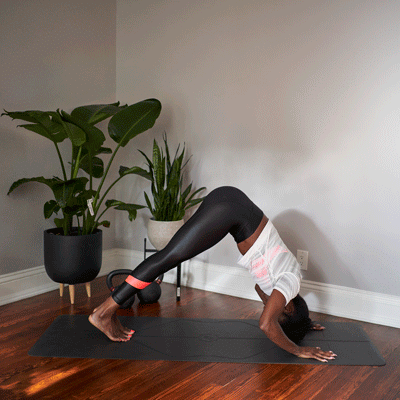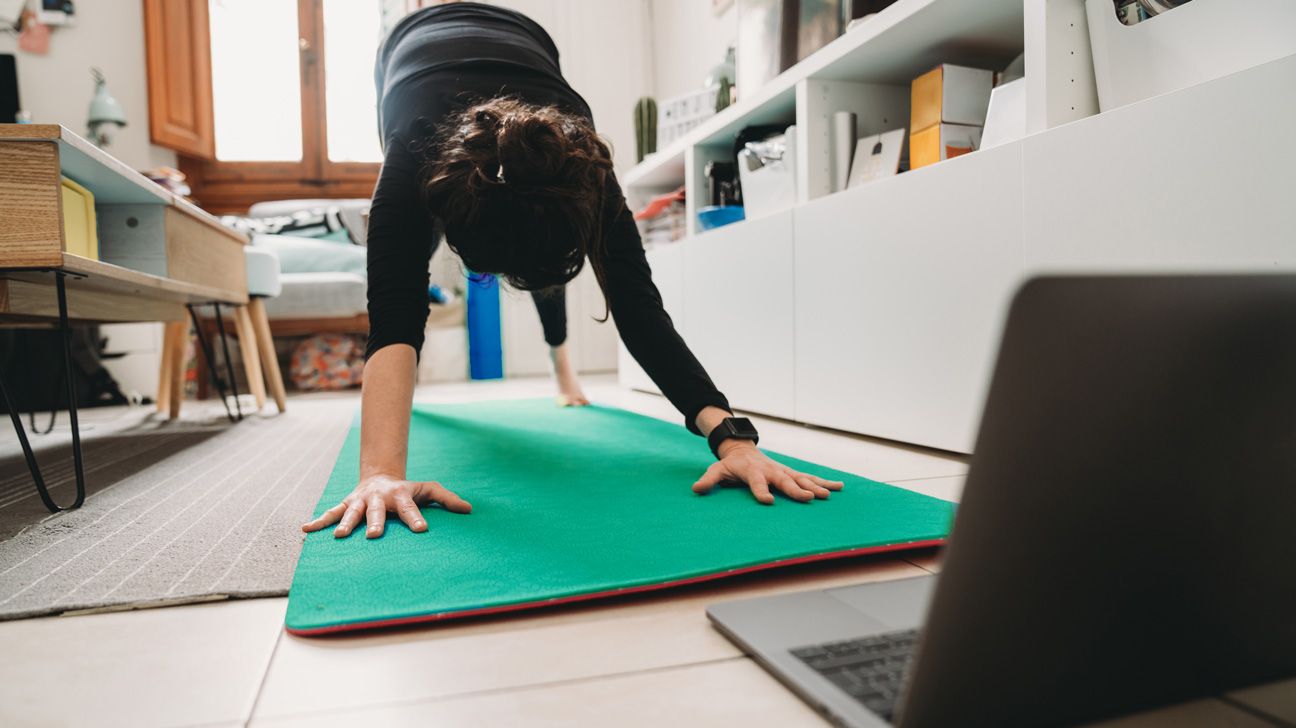The pike push-up looks like a mash-up of Downward-Facing Dog and Dolphin Pose, and this move can build major strength.
Use it as a stepping stone to harder moves or as a goal to boost your shoulder strength. The trick is to make sure you maintain proper form to keep your shoulders healthy — and to avoid face-planting!
“The pike push-up is powerful,” says ShaNay Norvell, a certified personal trainer based in Atlanta who’s been voted “Atlanta’s fittest athlete.”
But why is it so great?
- It’s a major shoulder strengthener. You’re going to feel every single rep in your upper body — but especially in your shoulders, Norvell says. And while it’s sorta like a traditional push-up, “the inverted V shape puts more emphasis on the shoulders versus the chest.”
- It preps you for a handstand. Norvell, who was a runner-up on “American Gladiator,” says you should start by perfecting your regular old classic push-up. Then, once you’re proficient, “the pike push-up is a great transition exercise for someone who is interested in gaining strength for a handstand” — or even a handstand push-up!
- It recruits your core. As you shift your weight forward into the pike position, your core has to fire up to keep you from toppling forward. This advanced push-up helps you “become more in tune with your weight being shifted overhead,” says Norvell.
The pike push-up is not a move for beginners, cautions Norvell. She also wouldn’t recommend it for anyone who’s recovering from an elbow or shoulder injury. (Also skip it if you’re prone to dizziness or low blood pressure.) Pay extra attention to your form and emphasize quality over quantity.
“I recommend 5–8 slow, controlled reps,” says Norvell. “To help make them slow and controlled, you can count to four as you go down and four as you return to the start position.”
Just starting? She suggests 2–3 sets of 5–8 reps, no more than twice a week — and rest for 1 minute between rounds for maximum strength gain. Add more reps and sets as you build strength.

Here’s how to do the perfect pike push-up, step by step!
- Start in a plank position on the floor, with hands firmly on the floor, right under your shoulders. Press toes firmly into the floor too.
- Keep core tight and back flat and engage your glutes and hamstrings. Your whole body should be neutral and in a straight line.
- Lift hips up and back until your body forms an inverted V shape. Keep arms and legs as straight as possible.
- Start to bend elbows, and then lower your entire upper body toward the floor.
- Stay there for a moment, then slowly push back up until your arms are straight and you’re in the inverted V position. Make sure you maintain control throughout the movement.
Not quite ready for a full pike push-up? That’s OK. Instead, break down the movement and work on the foundation.
- Practice your plank to build strength and stability in your shoulders and core.
- Perfect your push-up, so your shoulders are strong and healthy enough to try the piked version.
- Work on related moves like Dolphin Pose for shoulder stability and plank pike-ups on a stability ball for core and upper-body strength.
Once you’ve mastered the pike push-up, you can start to build strength by increasing the number of reps and sets.
You might also start to work on a handstand — or those handstand push-ups. You could also move on to the intermediate-level movements in this roundup of 82(!) push-ups you need to know about.
Or you can make your pike push-ups even harder with one of these variations:
- Lift one leg at a time before you start to bend your elbows.
- Elevate your feet by stepping onto a sturdy chair, bench, or box. Start slow and stay low to the floor. As it gets easier, go higher, which gets you closer to the handstand push-up!
- How slow can you go? Increase your count from four to… however long you can extend the move while maintaining perfect form!
Want to master the pike push-up? Start by slowing wayyyy down — and really dial into your form, Norvell advises.
“To someone who isn’t aware, a pike push-up can look like a push-up being performed incorrectly,” she explains. “Hips are in the air, making an inverted V shape with the body, and crown of head is pointed to the floor. For an ordinary push-up, this would be incorrect form. However, this is proper body position for a pike push-up, which is part of what makes it unique.”
Try these pro tips:
Don’t let your head touch (or hit!) the floor, but try to get as close as possible. If you’re not there yet, keep working toward your goal, lowering a little bit farther each time.
Don’t push it (haha) in this move — you don’t want to slip and fall on your face or injure your shoulder(s)!
Now that you know, go set up and practice some pikes!


